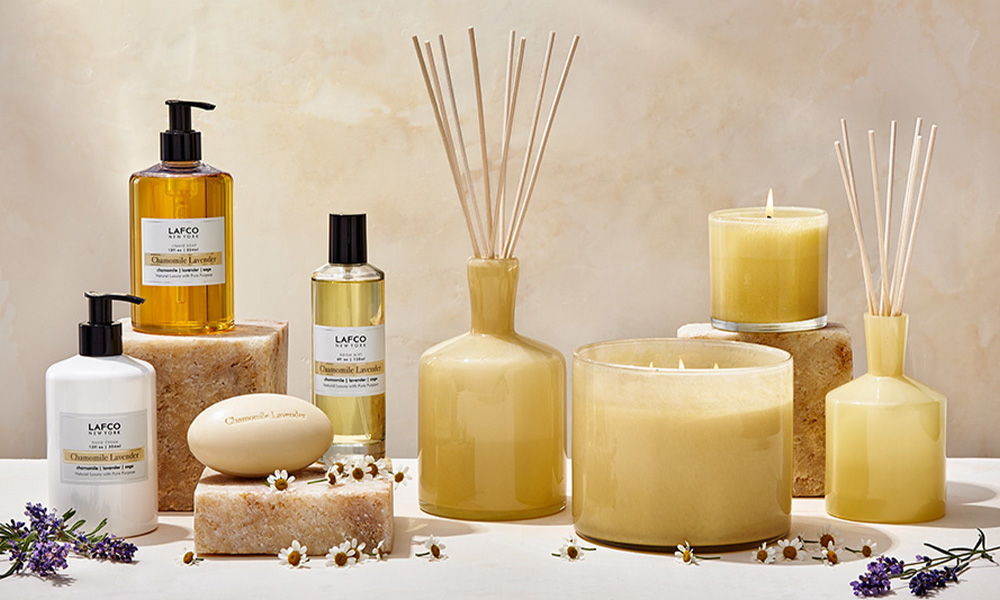Few things in life are actually as simple as they appear. Think of your favorite song, for example. More than just the melody, music is created from a combination of different instruments and sounds that combine to create something beautiful. Even your favorite color is a combination of different hues.
When it comes to fragrance, it’s all about combining different notes to create something unique that captivates you from that first whiff and keeps hold of your attention until the final note fades away. You don’t need to be a master of perfumery to appreciate a good fragrance, but it does help to understand the basics. The more you know, the more you’ll enjoy the fragrances you experience in life.
Here’s what you need to know about fragrance including the basics about fragrance families and how fragrance is created using top, middle, and base notes.
What Are Fragrance Notes?
When you breathe in the scent of your favorite fragrance, what you smell is actually a combination of different fragrances rather than a single aroma. Fragrance used in perfumery, aromatherapy, and other applications is made up of distinct layers known as “notes”.
These notes are divided into three separate elements:
- Top notes
- Middle notes (heart)
- Base notes
Top notes are also known as opening or head notes because they are the first ones you’ll notice. These notes are also the most volatile – they come on strong but fade fast, though not completely. Though they fade fairly quickly, top notes are essential because they represent your first impression – the top notes are what drive your instinctive decision about whether you like the fragrance or not. Common top notes used in fragrance include citrus (like orange, bergamot, or lemon), light fruits (like berries and grapefruit), and fresh herbs (like lavender, basil, and sage).
Middle notes are also known as heart notes because they make up the heart of the fragrance. Once the top notes fade, the middle notes become more noticeable – these make up between 40% and 80% of the final fragrance. Middle notes are often made up of a smooth combination of fruit or floral scents like Lemon Verbena or Citrus Berry.
After the top notes fade and middle notes have appeared and matured, what’s left is the base notes that appear and hold the fragrance together. Base notes make up 10% to 25% of the final fragrance but they blend with the middle notes to create a deeper, more full-bodied fragrance. These notes make a lasting impression that can linger for hours after the top notes have dissipated. Common base notes include sandalwood, vanilla, amber, patchouli, and musk.
Understanding Fragrance Families

Now that you have a better understanding of how fragrance is constructed, the next step is to learn how different scents are typically combined. Fragrances are divided into families which are often arranged in a circle to demonstrate their relationships to each other. The fragrance wheel, also known as the aroma wheel or perfume wheel, is a circular diagram first conceived by Austrian perfumer Paul Jellinek in The Practice of Modern Perfumery in 1949.
Here is a complete list of the fragrance families represented on this wheel:
- Floral notes (fresh cut flowers, aldehydes, powdery notes, orange blossom, sweet spices)
- Floral
- Soft floral
- Floral oriental
- Oriental notes (incense, amber, oriental resins, sandalwood, patchouli)
- Soft oriental
- Oriental
- Woody oriental
- Woody notes (aromatic woods, vetiver, oakmoss, amber, dry woods, leather)
- Woods
- Mossy woods
- Dry woods
- Fresh notes (lavender, aromatic herbs, bergamot, citrus oils, marine notes)
- Aromatic
- Citrus
- Water
- Green
Floral fragrances represent one of the broadest and most popular fragrance families. Anything with a sweet or flowery scent belongs in this category – examples include Fresh Cut Gardenia and Duchess Peony. Floral fragrances transition into oriental fragrances which are sweet, warm, and sometimes spicy. Here you’ll find rich and sensual scents like Amber Black Vanilla and Feu de Bois.
Following the fragrance wheel clockwise, you next come to woody notes like amber, vetiver, oakmoss, and leather. These fragrances are warm and captivating, even a little mysterious. Examples include Big Sky, Vetiver Sage, and Sandalwood.
The final fragrance family on the fragrance wheel is made up of fresh notes such as aromatic fragrances, citrus notes, marine notes, and green notes. These fragrances are bright and vibrant with a refreshing and uplifting quality. To enjoy fresh LAFCO fragrances for yourself, try Champagne, Marine, or Sea & Dune. Note sure what to choose? Browse by fragrance type to explore the options.
LAFCO and the Fragrance Evaporation Pyramid

Fragrance strength is a little different for aromatherapy applications like scented candles, room mist, and reed diffusers. It largely depends on the delivery method and the ratio of fragrance oil to carrier oil or alcohol. For example, fragrance from a scented candle is stronger than a reed diffuser when burning, but a reed diffuser produces a constant fragrance.
LAFCO candles are uniquely designed with the principles of the fragrance evaporation pyramid in mind. The fragrance evaporation pyramid models the rate at which certain fragrances evaporate over time. With LAFCO scented candles, no one fragrance is too harsh or too intense. The top, middle, and bottom notes are perfectly balanced to ensure a pleasant experience with each and every burn.
If you’re curious to learn more about fragrance notes or you’re interested in exploring your perfumery preferences, give the LAFCO Fragrance Finder a try. Choose from different fragrance families and answer simple questions about your preferences to be paired with the perfect fragrance.


